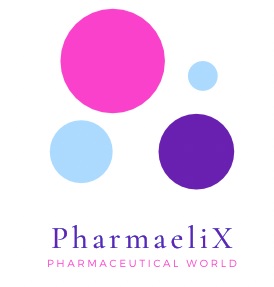Pharmaceutical water refers to purified water used in the pharmaceutical industry for the manufacture of pharmaceutical products. It is an essential ingredient in many pharmaceutical products, and is used for a variety of purposes, including washing, mixing, and dilution of active ingredients.

It must be pure, sterile, and free of impurities such as bacteria, viruses, and chemical contaminants.
In summary, pharmaceutical water plays a critical role in ensuring the quality and safety of pharmaceutical products, and is subject to strict regulatory standards.
Water for Pharmaceutical Use
Water for pharmaceutical use, also known as pharmaceutical water, is a type of purified water used in the pharmaceutical industry for the manufacture of various pharmaceutical products. It must meet strict quality standards set by regulatory agencies such as the US Food and Drug Administration (FDA) and the European Medicines Agency (EMA).
There are different types of water for pharmaceutical use, including purified water, water for injection (WFI), and purified steam. Each type serves a specific purpose and must meet specific quality requirements.
Purified water is used as an ingredient in many pharmaceutical products and must meet the quality standard of 10 μS/cm conductivity and a total organic carbon (TOC) level of less than 10 ppb.
Water for injection (WFI) is a high-purity water used in the preparation of parenteral solutions and must meet the quality standard of less than 10 μS/cm conductivity and a total bacterial count of less than 100 cfu/100 mL.
Purified steam is used for sterilization and must meet the standard of having a bacterial count of less than 10 cfu/100 mL.
Water is widely used as raw material, ingredient, and solvent in the processing, formulation, and manufacture of pharmaceutical products. The products are such as active pharmaceutical ingredients (APIs) and intermediates, compendial articles, and analytical reagents.
In conclusion, water for pharmaceutical use is a critical component in ensuring the quality and safety of pharmaceutical products, and must meet strict regulatory standards to guarantee its purity and suitability for use.
Types of Pharmaceutical Water
There are different types of pharmaceutical water, including purified water, water for injection (WFI), and purified steam. Each type is used for specific purposes and must meet specific quality standards.
Raw Water
Raw water is natural water found in the environment, such as rainwater, groundwater, and water bodies like lakes and rivers. Water in this form is considered raw, as opposed to water that has been treated before consumption, such as drinking water, or water that has been input into an industrial process.
Potable Water or Drinking Water
Drinking water shall supply under continuous positive pressure in a plumbing system free of any defects and no product contamination. Drinking water is unmodified except for limited treatment of the water derived from a natural or stored source. Examples of natural sources include springs, wells, rivers, lakes, and the sea.
The condition of the source water will dictate the treatment required to render it safe for human consumption (drinking). Typical treatment includes softening, removal of specific ions, particle reduction, and antimicrobial treatment. It is common for drinking water to be derived from a public water supply that may be a combination of more than one of the natural sources listed above. It is also common for public water supply organizations to conduct tests and guarantee that the drinking water delivered is of potable quality.
Purified Water
Purified Water is used as an excipient in the production of non-parenteral preparations and in other pharmaceutical applications, such as cleaning of certain equipment and non-parenteral product-contact components. Unless otherwise specified, Purified Water is also to be used for all tests and assays for which water is indicated.
Purified water (PW) should be prepared from a potable water source as a minimum-quality feed water, should meet the pharmacopoeial specifications for chemical and microbiological purity, and should be protected from recontamination and microbial proliferation.
Highly purified water
Highly purified water (HPW) should be prepared from potable water as a minimum-quality feed water. HPW is a unique specification for water found only in the European Pharmacopoeia. This grade of water must meet the same quality standard as water for injections (WFI) including the limit for endotoxins, but the water-treatment methods are not considered to be as reliable as distillation. HPW may be prepared by combinations of methods such as reverse osmosis, ultrafiltration, and deionization.
Water for Injection
Water for injection is used as an excipient in the production of parenteral and other preparations where product endotoxin content must be controlled, and in other pharmaceutical applications, such as cleaning of certain equipment and parenteral product-contact components. The minimum quality of source or feed water for the generation of Water for Injection is Drinking Water as defined by the U.S. Environmental Protection Agency (EPA), EU, Japan, or WHO.
Sterile Water for Injection
Sterile Water for Injection (see the USP monograph) is Water for Injection packaged and rendered sterile. It is used for extemporaneous prescription compounding and as a sterile diluent for parenteral products. It may also be used for other applications where bulk Water for Injection or Purified Water is indicated but where access to a validated water system is either not practical or where only a relatively small quantity is needed. Sterile Water for Injection is packaged in single-dose containers not larger than 1 L in size.
Pure Steam
Steam is the technical term for water vapor, the gaseous phase of water, which is formed when water boils. Water vapor cannot be seen, though in common language it is often used to refer to the visible mist of water droplets formed as this water vapor condenses in the presence of cooler air.
Reference for Pharmaceutical Water
Guideline on the quality of pharmaceutical water and uses PDF
Stay tuned here for the latest & never before pharma articles only at PharmaeliX – Quality Control Definitions and Terms

Trackbacks/Pingbacks